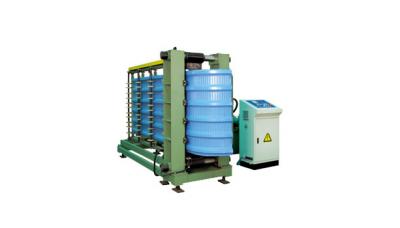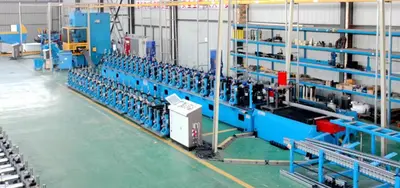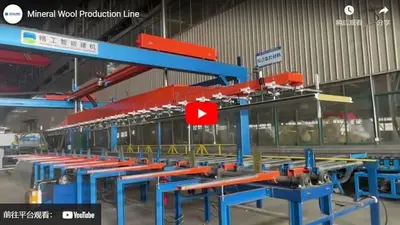Explanation of the Polyurethane Sandwich Panel Production Line
Overview of the Polyurethane Sandwich Panel Production Line
The polyurethane sandwich panel production line is an automated production line used to produce sandwich panels, consisting of processes such as feeding, mixing, liquid injection, stirring, molding, curing, and cutting. This equipment can not only produce polyurethane sandwich panels and rock wool sandwich panels but also boasts high production efficiency and a high degree of automation.
Polyurethane Sandwich Panel Production Line Process Flow
1. Raw Material Preparation: Materials such as polyurethane, rock wool, steel plates, and topcoats.
2. Raw Material Mixing: Mix polyurethane, rock wool, and other additives in proportion and load them into the mixing barrel.
3. Material Preparation and Injection: Pre-treat the base plates on the operation table, and inject the mixed raw materials into the core material using a liquid injection pump.
4. Material Curing: Through automatic control of liquid injection, stirring, and mixing, the materials are cured in the mold.
5. Other Processes: Composite board, trimming, and cutting.
Performance Characteristics of the Polyurethane Sandwich Panel Production Line
High degree of automation, high production efficiency, and labor cost savings.
Simple operation and energy-saving.
No noise, pollution, or odor during the production process.
Stable product quality, precise dimensions, and excellent insulation, sound absorption, and fire resistance properties.
Applications of the Polyurethane Sandwich Panel Production Line
Construction Field: The polyurethane rock wool sandwich panels produced by this equipment can be used as materials for walls, roofs, floors, etc., offering excellent insulation and soundproofing properties.
Cold Storage Field: The rock wool sandwich panels produced by this equipment can be used as cold storage panels, offering excellent insulation and heat preservation properties while maintaining low temperatures.
Insulation Field: The polyurethane rock wool sandwich panels are among the most common insulation materials on the market, effectively enhancing the energy-saving efficiency of buildings and reducing energy waste.
In summary, the polyurethane sandwich panel production line is an indispensable production equipment in the fields of construction, cold storage, and insulation. As market demands for energy-saving and environmental protection continue to increase, this equipment will gradually receive more attention and application.


 CN
CN
 EN
EN
 fr
fr  de
de  es
es  it
it  ru
ru  pt
pt  ar
ar  th
th  pl
pl  ro
ro 







 Call us on:
Call us on:  Email Us:
Email Us:  #1809, Jianhu Rd, Keqiao, Shaoxing, Zhejiang, China
#1809, Jianhu Rd, Keqiao, Shaoxing, Zhejiang, China 